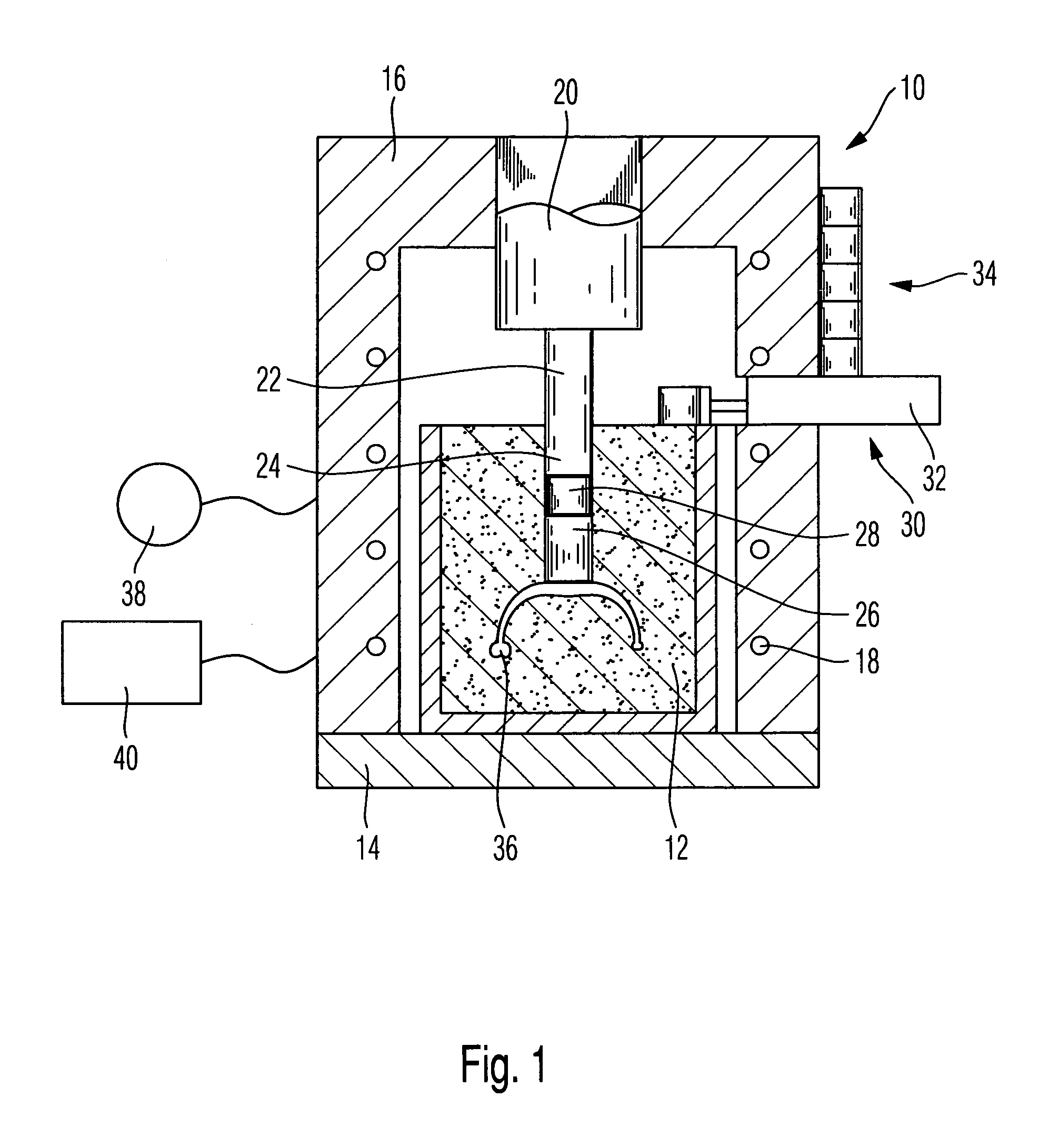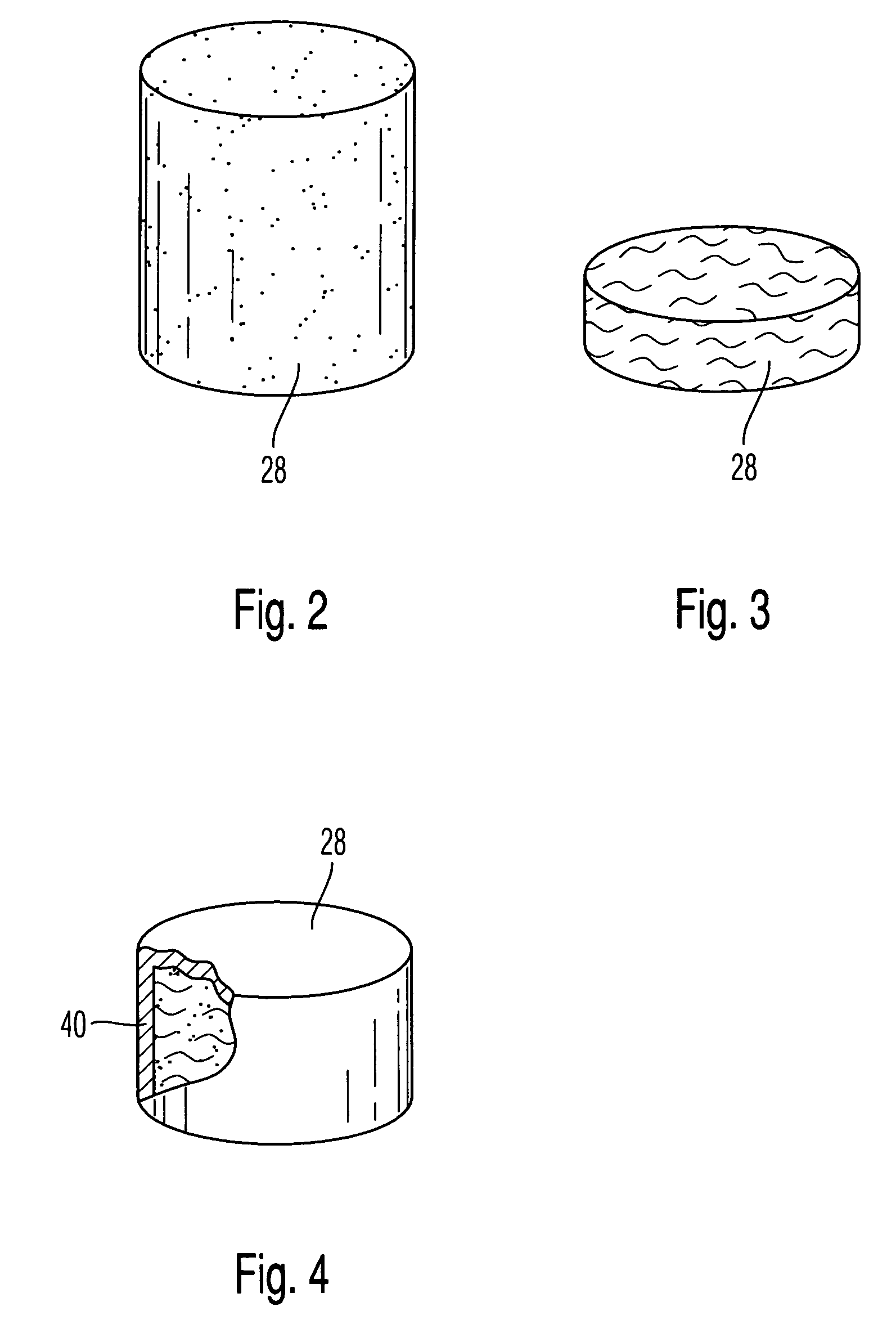Press oven including an intermediate body, and method for use
a press oven and intermediate body technology, applied in the field of press ovens, can solve the problems of pressing stamps that cannot be easily removed, press stamps remain slightly stuck to ceramics, and press stamps that must exert considerable pressure, etc., to achieve the effect of reducing the operating speed of the press stamp of the press oven, reducing the operating cost, and reducing the cost of capital
- Summary
- Abstract
- Description
- Claims
- Application Information
AI Technical Summary
Benefits of technology
Problems solved by technology
Method used
Image
Examples
Embodiment Construction
[0050]The press oven 10 shown in FIG. 1 is configured for the receipt of a muffle 12. The press oven comprises a base plate 14 and a press oven hood 16 that receives the heating element 18 of the press oven 10. A press piston 20 is moved in a known manner centrally and from above within the press oven hood 16, the piston transitioning into a press stamp 22 that is in a position to penetrate into a feed channel 24 located in the muffle 12.
[0051]In connection with the production of a dental restoration piece, a cylindrically shaped blank 26 of dental material is disposed in the feed channel. In accordance with the present invention, an inventive intermediate body 28 is thereafter disposed in the feed channel 24 before the press stamp 22 is traveled downwardly.
[0052]The blank 26 can be comprised either of a ceramic mass such as, for example, aluminum oxide ceramic, a zirconium oxide ceramic, or a mixture of these or, as well, can comprise a metal alloy.
[0053]In accordance with this inv...
PUM
| Property | Measurement | Unit |
|---|---|---|
| melting temperature | aaaaa | aaaaa |
| melting temperature | aaaaa | aaaaa |
| temperature | aaaaa | aaaaa |
Abstract
Description
Claims
Application Information
 Login to View More
Login to View More - R&D
- Intellectual Property
- Life Sciences
- Materials
- Tech Scout
- Unparalleled Data Quality
- Higher Quality Content
- 60% Fewer Hallucinations
Browse by: Latest US Patents, China's latest patents, Technical Efficacy Thesaurus, Application Domain, Technology Topic, Popular Technical Reports.
© 2025 PatSnap. All rights reserved.Legal|Privacy policy|Modern Slavery Act Transparency Statement|Sitemap|About US| Contact US: help@patsnap.com



